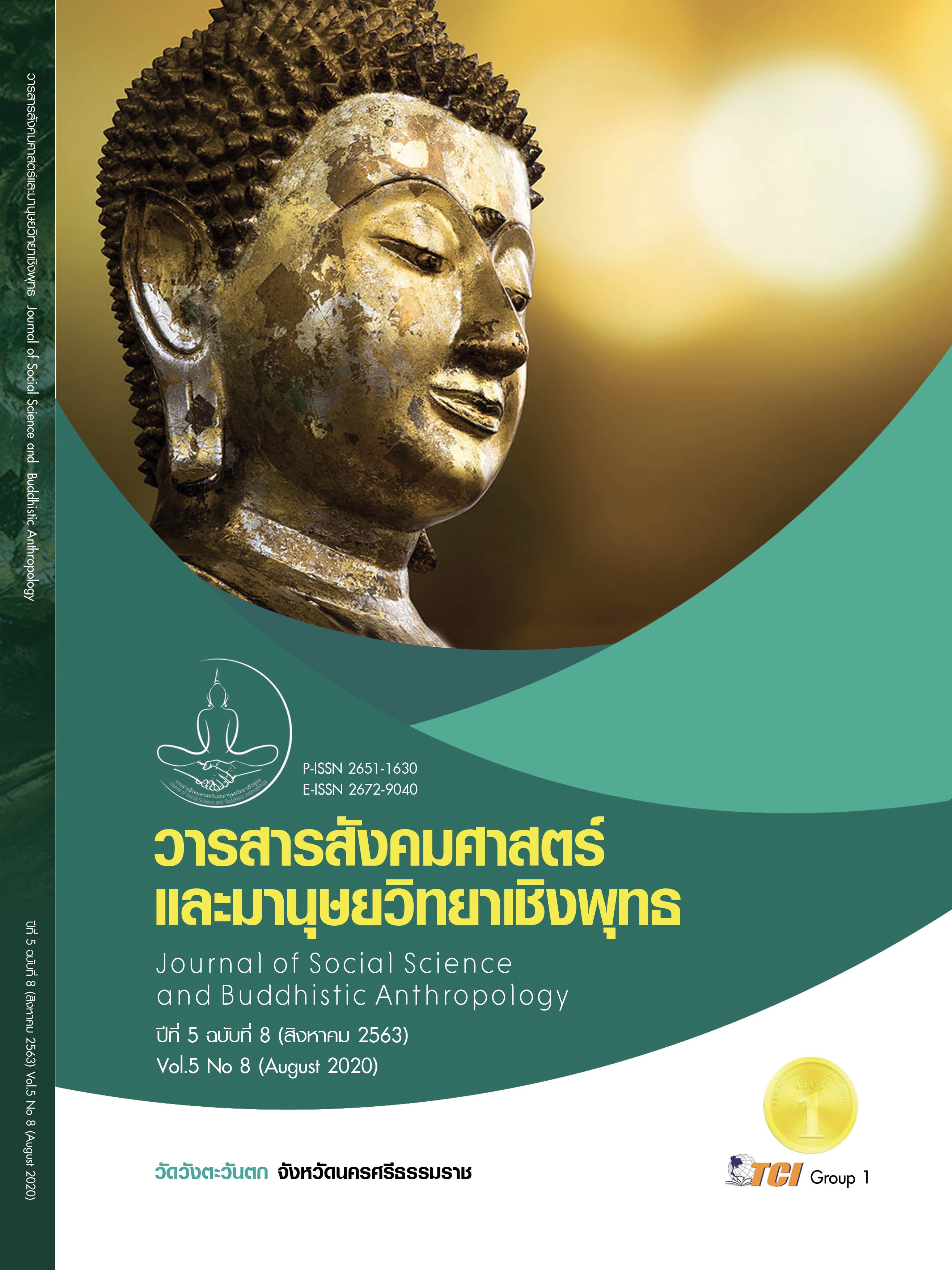U-LEARNING MODEL BASED ON CONNECTIVISM THEORY FOR ENGLISH COVERSATION SKILL DEVELOPMENT AMONG THE STUDENTS AT RAJAMANGALA UNIVERSITY OF TECHNOLOGY THANYABURI
Keywords:
U-Learning, Connectivism, English Conversation SkillsAbstract
The purposes of this study were: 1) to develop the U-Learning model based on connectivism theory for English conversation skill development among students of Rajamangala University of Technology Thanyaburi; 2) to compare the learners’ listening and speaking skills before and after the intervention of using the U-Learning lessons; 3) to study the learners’ behavior while using the U-Learning lessons; and 4) to evaluate the learners’ satisfaction towards the U-Learning lessons. The methodology was mixed research method. The samples were thirty-two freshmen of Rajamangala University of Technology Thanyaburi, recruited through cluster sampling. The interview, rating-scale questionnaires, observation, and evaluation forms were used as research instruments. The content analysis, mean, standard deviation, and t-test were used for analyzing the data. The findings revealed that the the U-Learning model development process consisted of 4 components as follows: (1) the input of the model (Ubiquitous Learning Environment (ULE), learning facilities, and Learning Management System (LMS)); (2) process of the model (learning objective, learning steps of English communicative approach, and connectivism activities); (3) the performance of learning; and (4) Feedback – focusing on self-development through online practice. The developed U-learning model received the highest score ( = 4.51) on senior experts’ evaluation, indicating its high usability value. The mean of the learners’ English communicative skills after using the U-learning lessons was higher than the one before the intervention with a statistical significance at the .05 level. Learning’ behavior: in terms of learners’ expectation was at a high level. Learners’ self- assessment was at a moderate level. Learners’ frequency of English conversation practice was at a moderate level reflecting occasional practice. The majority of learners’ utilized a discussion forum for knowledge sharing. The overall learners’ satisfaction was at a high level (
= 4.11).
References
เกศนีย์ มากช่วย และคณะ. (2561). ปัจจัยที่ส่งผลต่อความวิตกกังวลในการพูดภาษาอังกฤษของนักศึกษาชั้นปีที่ 3. ใน การประชุมหาดใหญ่วิชาการระดับชาติและนานาชาติ ครั้งที่ 9. มหาวิทยาลัยหาดใหญ่.
คัมภีรภาพ คงสำรวย และคณะ. (2561). ปัจจัยที่ส่งผลต่อความวิตกกังวลในการพูดภาษาอังกฤษของนักศึกษาหลักสูตรศิลปศาสตรบัณฑิต สาขาวิชาภาษาอังกฤษ มหาวิทยาลัยมหามกุฏราชวิทยาลัย วิทยาเขตอีสาน. วารสารวิชาการแสงอีสาน, 15(1), 143-153.
บุญชม ศรีสะอาด. (2537). การพัฒนาการสอน. กรุงเทพมหานคร: สุวีริยาสาสน์.
ล้วน สายยศ และอังคณา สายยศ. (2538). เทคนิคการวิจัยทางการศึกษา (พิมพ์ครั้งที่ 4). กรุงเทพมหานคร: สุวีริยาสาส์น.
วารนันท์ นิติศักดิ์. (2557). การพัฒนารูปแบบการเรียนการสอนผ่านเครือข่ายอินเทอร์เน็ตตามทฤษฎีคอนเนคติวิสต์ซึมของนักศึกษาโครงการมหาวิทยาลัยชีวิต มหาวิทยาลัยราชภัฎชัยภูมิ. ใน ดุษฎีนิพนธ์ศึกษาศาสตรดุษฎีบัณฑิต สาขาเทคโนโลยีการศึกษา. มหาวิทยาลัยเกษตรศาสตร์.
สรญา สาระสุภาพ. (2553). การพัฒนารูปแบบการเรียนแบบเครือข่ายสังคมผ่านระบบออนไลน์ด้วยทฤษฎีการเรียนรู้เชิงสถานการณ์เพื่อเสริมสร้างความตระหนักระหว่างวัฒนธรรมของผู้เรียนภาษาต่างประเทศ. ใน ดุษฎีนิพนธ์คุรุศาสตรดุษฎีบัณฑิต สาขาเทคโนโลยีและสื่อสารการศึกษา. จุฬาลงกรณ์มหาวิทยาลัย.
สำนักวิทยบริการและเทคโนโลยีสารสนเทศ. (2556). รายงานผลการสอบวัดพื้นฐานภาษาอังกฤษ นักศึกษาชั้นปีที่ 1 แรกรับเข้า. กรุงเทพมหานคร.
Boitshwarelo, B. (2011). Proposing an integrated research framework for connectivism: Utilising theoretical synergies. The International Review of Research in Open and Distributed Learning, 12(3), 161-179.
Evans, D. (2012). The internet of everything: how more relevant and valuable connections will changethe world. United States: Cisco Internet Business Solutions Group.
Watson, C.E., & Plymale, W.O. (2011). The pedagogy of things: Ubiquitous learning, student culture, and constructivist pedagogical practice. Retrieved January 11, 2016, from http://eddiewatson.net/pdf/watson_plymale.pdf
Weiser, M. (2009). The Computer for the 21st Century. Retrieved January 11, 2016, from https://www.ics.uci.edu/~corps/phaseii/Weiser-Computer21stCentury-SciAm.pdf
Wu T. et al. (2011). Ubiquitous English Learning System with Dynamic Personalized Guidance of Learning Portfolio. Educational Technology & Society, 14, 164-180.








